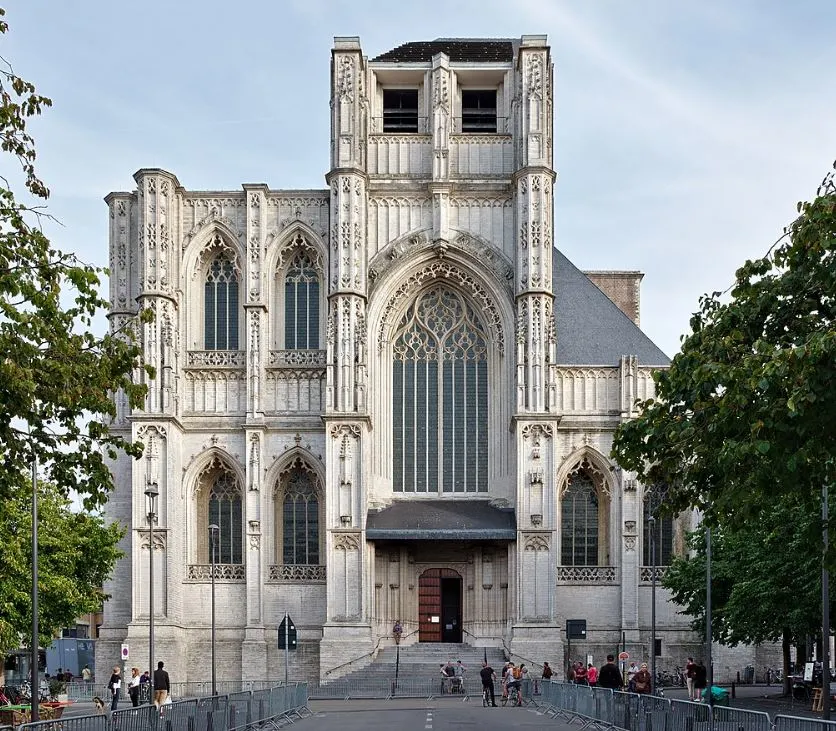When this Early Netherelandisch artist moved from his native Haarlem to Leuven, he earned a very prestigious commission from a local confraternity.
Dieric Bouts (1415-1475) produced one of the most influential works of art shortly after, and this altarpiece is special for a number of reasons.
Even though it’s a triptych, it depicts five different scenes that are arranged in three different panels, with the central part depicting a Last Supper scene.
In this article, you’ll discover some of the most interesting facts about the Altarpiece of the Holy Sacrament by Dieric Bouts, a fascinating work of art.
1. It was painted in the decade after Bouts moved from Haarlem to Leuven
Little is known about the early life and training of Dieric Bouts, a man who moved from the city of Haarlem in the modern-day Netherlands to Leuven in modern-day Belgium in the 1450s.
Art historians have suggested that he might have been trained in the workshop of Rogier van der Weyden, a painter who was in turn heavily influenced by the paintings of Jan van Eyck.
These two artists were some of the leading figures of the northern Renaissance so he definitely had good masters to learn from.
He was certainly in Leuven in 1457 and became the leading painter in the city shortly after. He completed the Altarpiece of the Holy Sacrament somewhen between 1464 and 1468 (the exact date remains unknown).
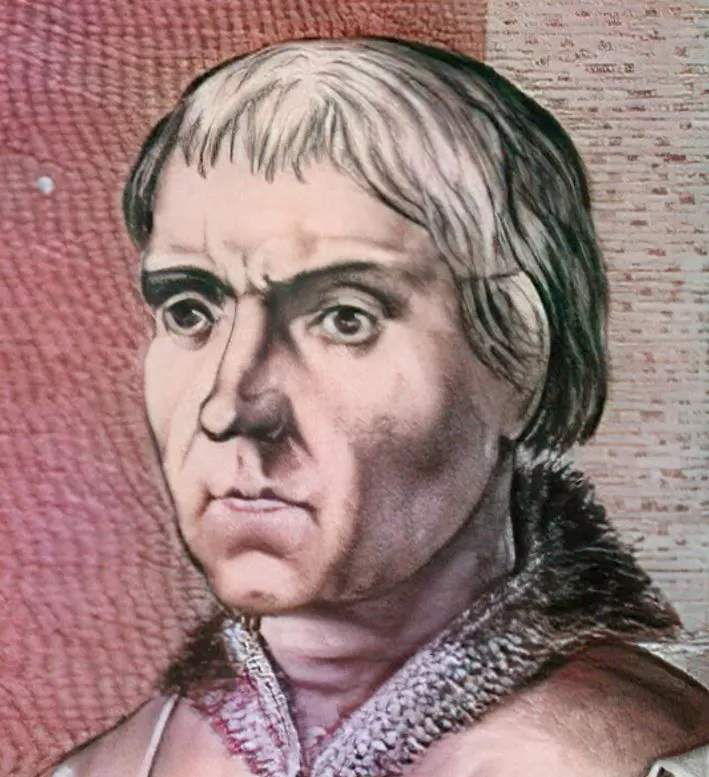
2. The central painting depicts a Last Supper scene with an oversized Jesus Christ
The painting is a so-called “triptych” which features a central panel that is adjoined by two side panels. These can be closed as the side panels are attached to the central panel by hinges.

The central panel was a revolutionary work of art as it was the first Last Supper painting on a panel that was completed in the Flanders region.
Bouts brought this idea with him from his native Haarlem where some artists had already painted group portraits.
The work depicts Jesus Christ who is conducting the Eucharist at a table while being surrounded by his followers.
Jesus is about double the size of his followers and this was not a mistake but something that was quite common at the time.
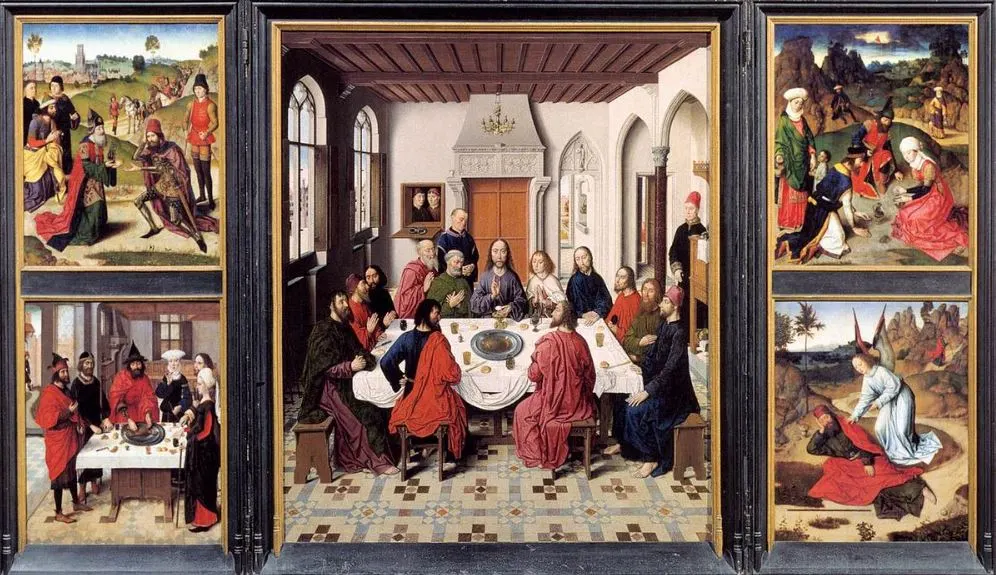
3. It was commissioned by a local fraternity and probably features real portraits
There’s a good reason why Dieric Bouts painted a Last Supper scene. That’s because the painting was commissioned by the Leuven Confraternity of the Holy Sacrament in 1464.
It’s likely that Bouts suggested this type of group painting so he could include the most prominent members of the Confraternity.
The paintings of van Eyck and van der Weyden also often featured the donors so this was common. Depicting them as the Apostles of Jesus Christ wasn’t.
The painting was commissioned to serve as the altarpiece for St. Peter’s Church in Leuven which was still being built at the time (the Gothic church was constructed between 1425 and 1475).

4. The Last Supper painting is special for two main reasons
I already mentioned that it was the first Last Supper painting in Flanders, and that’s the first main reason why the central panel of the Altarpiece of the Holy Sacrament is so special.
The second reason is that it was one of the first major works that integrated the technique of linear perspective in the northern part of Europe.
The central part of the painting leads to a vanishing point that is located just above the head of Jesus Christ. This was a remarkable achievement at the time.
Equally remarkable is the fact that the smaller room on the right and the landscape outside the window on the left don’t lead to the same vanishing point.

5. The two side panels depict four different Biblical scenes
The central panel is adjoined by two side panels that feature 5 different scenes. These are all Biblical stories chosen by the confraternity.
The side panels are actually 4 different panels that are joined together. These were once separated and scattered in museums all across Europe.
The Nazis stole the Last Supper Triptych in 1942, but the triptych including the central panel and 5 side panels is back together today.
The Meeting of Abraham and Melchizedek
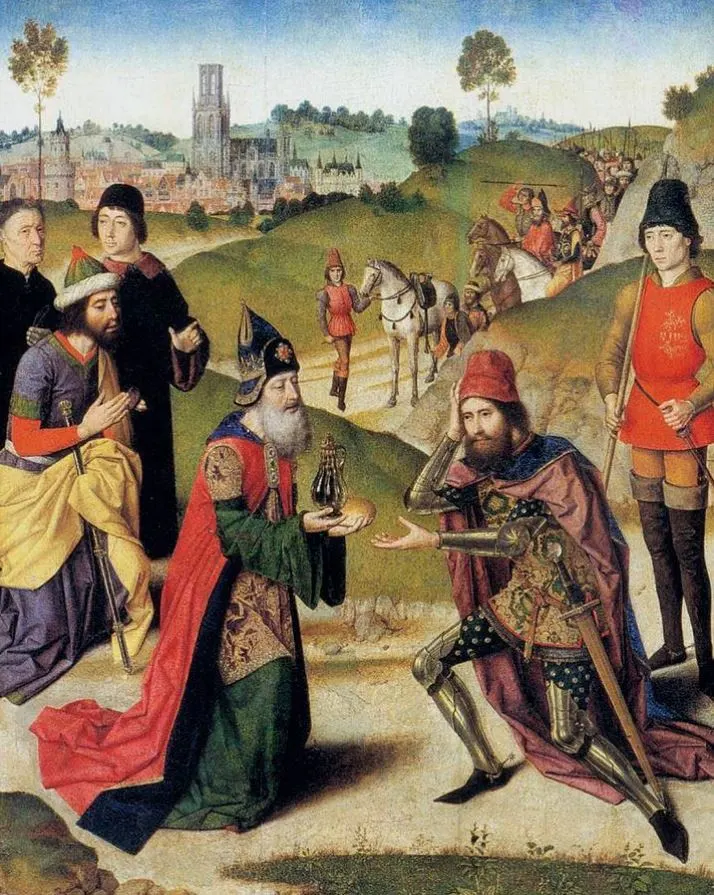
The Feast of the Passover
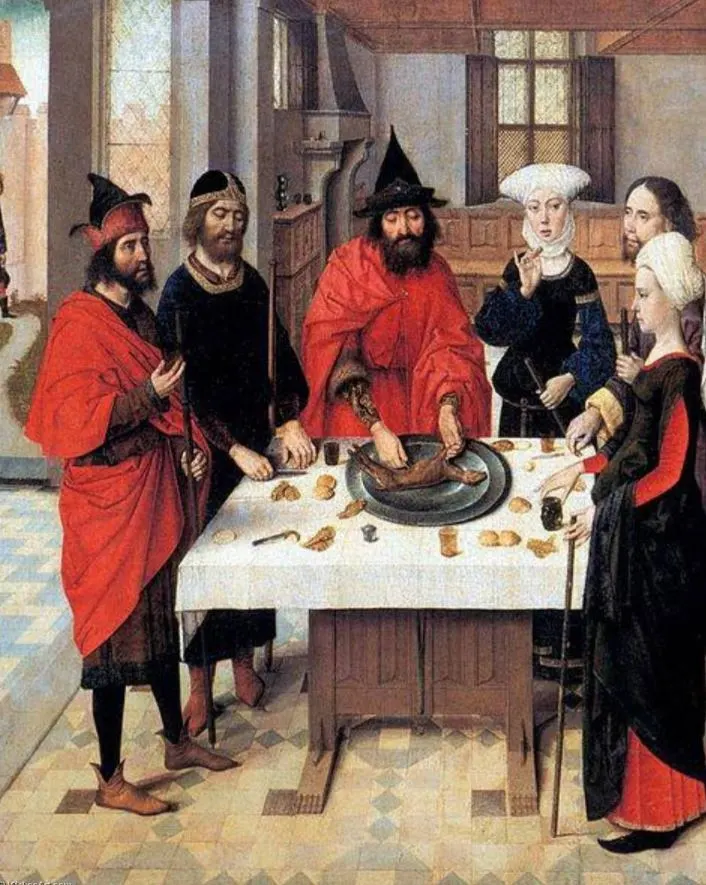
The Gathering of the Manna

Prophet Elijah in the Desert

6. The painting was copied by the artist’s son but with a couple of minor changes
Dieric Bouts had two sons who became painters as well. Dieric Bouts the Younger (1448-1491 died early in the early 1490s but Aelbrecht Bouts (1452-1549) had a very long life.
He often copied paintings of his father, including the popular Last Supper painting that his father completed in the 1460s. He did, however, adopt a distinctive style with very strong colors.
The painting, completed around 1530, looks fairly similar except for the scenery outside the window. By then, the beautiful Leuven Town Hall was already completed and the market had been modernized.
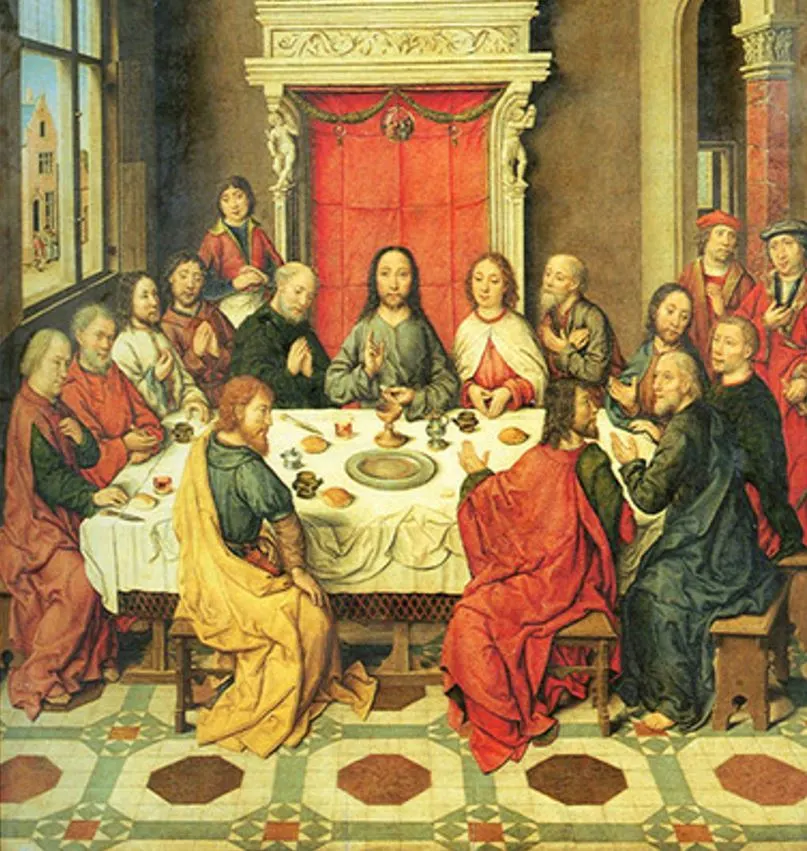
7. How big is the Altarpiece of the Holy Sacrament by Dieric Bouts?
Despite the fact that this painting was commissioned to serve as an altarpiece, it’s far from being a huge work of art.
The Altarpiece of the Holy Sacrament (1464-1468) by Dieric Bouts is a medium-sized oil-on-panel painting of which the central panel has dimensions of 88 × 71 centimeters (35 x 28 inches).
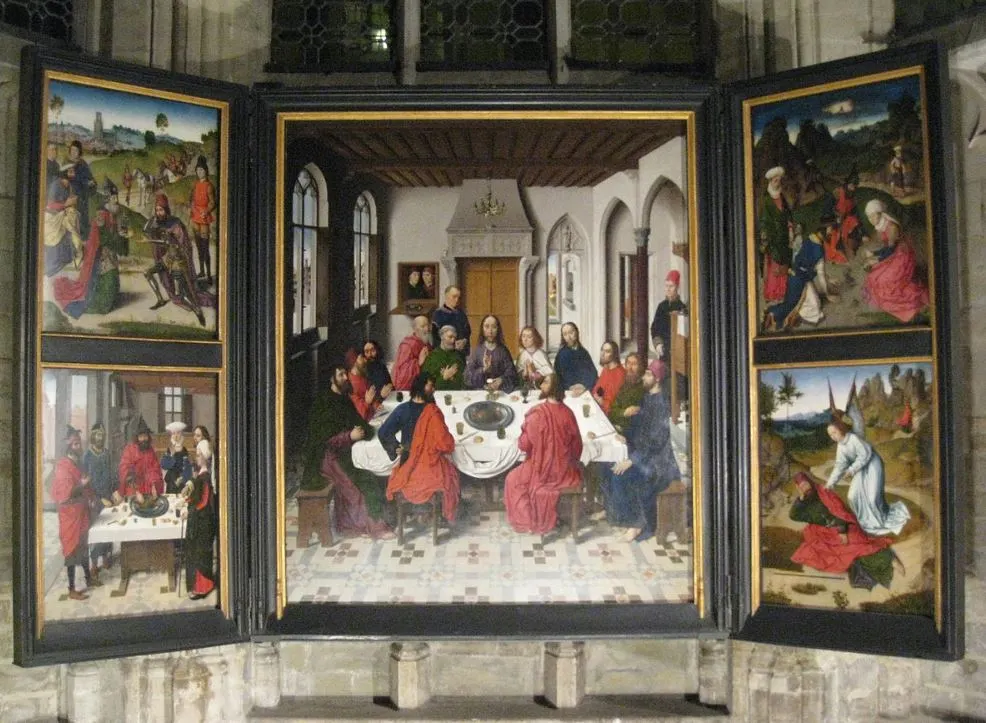
8. Where is Bouts’ masterpiece located today?
The side panels were sold to German museums in the 19th century and these were legitimate acquisitions. In the aftermath of World War I, the panels were returned to Leuven following the Treaty of Versailles.
Apart from a brief period during World War II, the triptych is still on display in the same church it hung for many centuries, St. Peter’s Church in Leuven.
A space at the end of the church has been transformed into a small museum that is part of the M-Museum in Leuven.
The Altarpiece of the Holy Sacrament and several other masterpieces by Flemish Primitives can be admired there.
